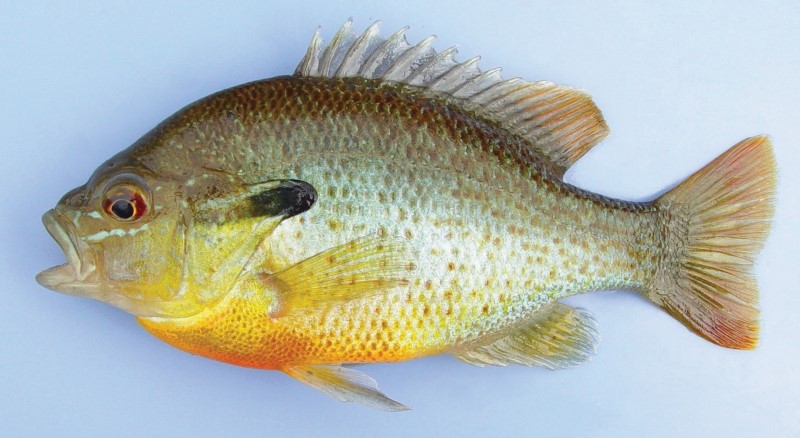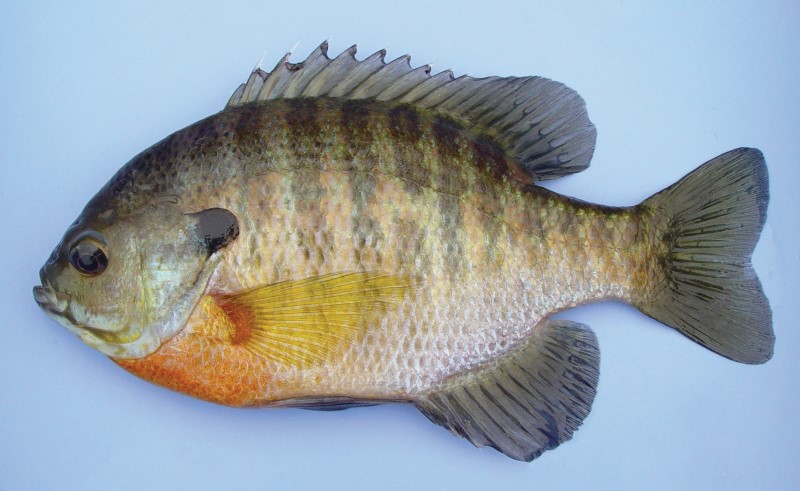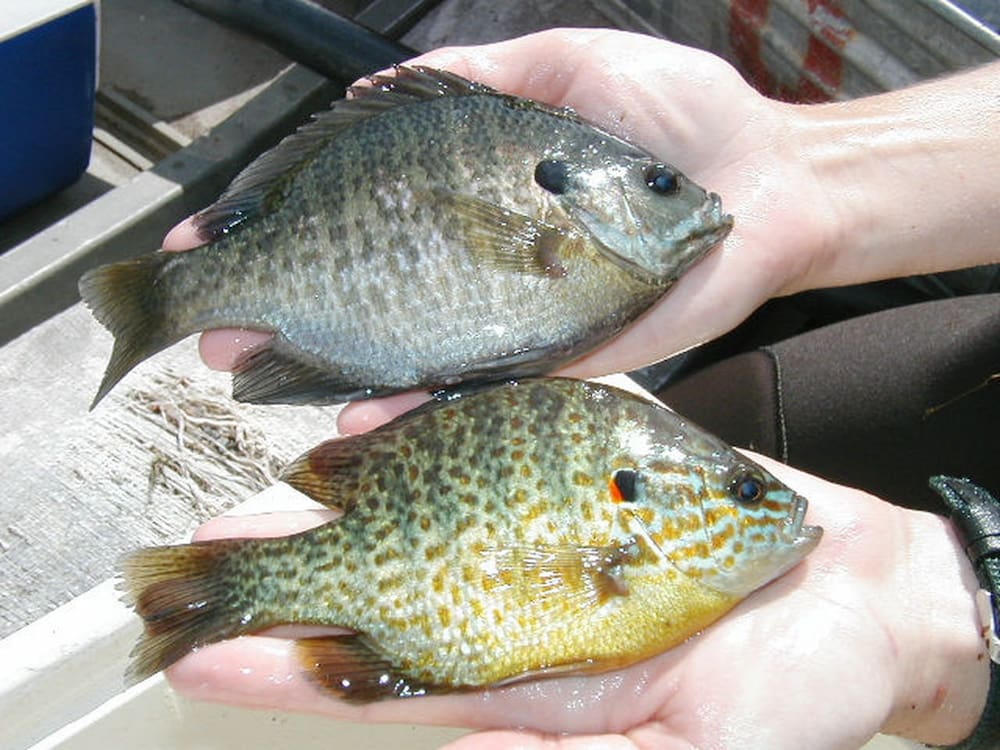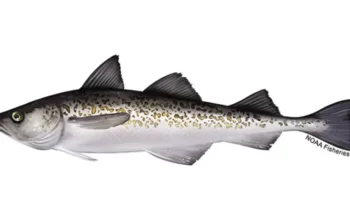The Sunfish and Bluegill are two species that are frequently confused with one another. Contrary to popular belief, there are two different species of panfish. There are some important distinctions; among them, habitat, species-specific characteristics, colors, size, and diet are some of the most notable.
Bluegill Vs Sunfish: The Sunfish is a saltwater fish, whereas the Bluegill is a freshwater fish. Bluegills have flat bodies and are dark blue with lighter spots. Sunfish have dorsal fins and much longer, wider bodies. Their hues range from white to brown to silver. Their sizes are wildly dissimilar. Compared to sunfish, bluegill is significantly lighter and smaller. While sunfish eat a variety of fish and other sea life, bluegill consume plankton.
bluegill vs sunfish
Please keep reading.
Table of Contents
Are Bluegill And Sunfish The Same Thing?
Sunfish are a family of freshwater fish (Centrarchidae) native to There are currently 34 species of fish in this family, all of which are found in North America. The Bluegill is one of the most widespread and popular species. So, while a sunfish is not specifically a bluegill, it is a member of the family of fish known as sunfish. Anglers frequently confuse these words, but they mean very different things.
Simply put: Bluegills are a particular species of sunfish, but not all sunfish are bluegills.
Consider the Terrier breed family as an illustration. There are 33 different species in this group of dog breeds, including the Yorkshire Terrier, Bull Terrier, and Jack Russell Terrier.
Though each of these dogs is a different size, color, and temperament, they are all terriers. A Jack Russel Terrier and a Bull Terrier are not the same breed.
Sunfish and bluegill behave similarly. Similar to how a Yorkshire Terrier is a particular type of Terrier, the Bluegill is a particular type of sunfish. On the other hand, not all Terriers are Yorkshires, just as not all Sunfish are Bluegill. Make sense?
So What Is A Sunfish?

Scientifically speaking, the term “sunfish” does not designate a particular species of fish. Sunfish are a family of freshwater fish (Centrarchidae) native to There are currently 34 species of fish in this family, all of which are found in North America. You might be surprised by some of them!
Did you know that the sunfish family includes black crappie, largemouth bass, and smallmouth bass?
When trying to identify these species, it can be difficult because many of them have similar traits, traits of size, traits of color, and traits of habitat.
What Other Fish Can I Use In Its Place?
Try out the substitutes listed below if a recipe calls for bluegill but you can’t find it for some reason. Almost identical to bluegill’s mild flavor in terms of mildness, they have.
- Black crappie
- Redear sunfish
- White crappie
- Redbreast sunfish
- Pumpkinseed sunfish
What Is A Bluegill?

Bluegill (Lepomis macrochirus) is a freshwater fish species that is a member of the sunfish family. Out of all the sunfish species, they are the most prevalent and widely distributed. Anglers frequently refer to bluegill as “sunfish” when describing them. Other names include “bream,” “coppernose,” or “sunny’s.”
Juvenile Bluegill
Young Bluegill
Adult Male Bluegill
Size, age, sex, diet, and water quality all affect how bluegill look.
Appearance– Bluegills resemble panfish in appearance and have a deep body, a small mouth, a long dorsal fin, and a tail that is slightly forked. A dark ear cover and a spot at the back bottom edge of the dorsal fin serve as their identifying characteristics.
They have even been introduced into other parts of the world. They are found all over North America, from Mexico to Canada.
Habitat– Bluegill can be found in a wide range of habitats, from deep natural lakes to ditches by the side of the road. Although they can be found in rivers, canals, and reservoirs, they prefer the calm waters of freshwater lakes, ponds, lagoons, and quiet creeks.
They look for cover in structures like dock pilings, brush piles, and submerged logs or in aquatic plants like hydrilla, lilypads, and cattails.
Behavior– Although worms, small minnows, and freshwater crustaceans are also readily consumed by bluegill, they typically eat insects and their larvae.
Throughout early spring and summer, Bluegill spawn and create “beds” in shallow sandy areas where males defend the nest from predators. Since they reproduce frequently, it is not unusual for anglers to catch 50–100 fish each day.
Fishing Tips- The most effective live baits for bluegill fishing are grass shrimp, live worms, and crickets. In terms of artificial lures, beetlespins, surface poppers, or ultra-light crankbaits work best for luring bluegill.
Although they are catchable throughout the day in the warmer spring and summer months, bluegill bite best in the early morning and late afternoon. Concentrate on vegetated areas, which are typically found in 8 feet or less of water. A bluegill is usually followed by others.
What Sunfish Alternatives Are There?
If a recipe calls for sunfish, you can substitute any edible sunfish species, including bluegill, smallmouth bass, largemouth bass, rock bass, and many more. Compared to fish species from other families, they are all mild, clean, and lack a fishy flavor.
The 8 Key Differences Between Bluegill Vs Sunfish
Despite their similarities, the Bluegill and Sunfish differ greatly enough from one another to be distinguished. The interactions of these species with their environment and other species are impacted by these species’ differences. Here is a closer look at these differences:
Terminology
The terminology used to describe bluegill and sunfish differs most significantly. One specific freshwater fish is designated as bluegill. On the other hand, sunfish stands for a group of freshwater fish belonging to the same family, Centrarchidae.
The sunfish family includes the bluegill as well. Consequently, all bluegill are a variety of sunfish. Other freshwater fish species do exist in the sunfish family, though. So not every sunfish is a bluegill.
Taste And Texture
When compared to other sunfish, bluegill have a similar flavor and texture. Compared to other table fish, the meat is firm, mild, clean, and unmistakably less fishy. However, there are a few minor variations when compared to other common sunfish, such as bass or crappie.
- Compared to smallmouth and bluegill, largemouth bass has a fishier flavor.
- The flavor of fish can occasionally be very strong in black crappie with red flesh. Additionally, the meat is not as firm as bluegill meat.
- Comparing green sunfish to bluegill, the former has a fishier flavor and a less firm texture.
Therefore, bluegill and sunfish taste pretty similar, but the “fishy” taste might be more pronounced in other sunfish species.
Nutrient And Mercury Content
The nutrient content of bluegill and sunfish is almost identical. The reason for this is that bluegills themselves are a subspecies of sunfish. The various species of sunfish do, however, frequently exhibit small differences.
For instance, largemouth bass has 0.6 gm of omega 3 acid compared to bluegill’s 0.16 gm. It is therefore more nutrient-rich than bluegill. Black crappie has 0.29 g more Omega 3 Acid than bluegill, for example.
The fat content of bluegill, however, is lower (0.8 grams) than that of black crappie (1.3 grams) and largemouth bass (4 grams).
Limited Or Broad Range
Native to North America, the bluegill is a freshwater species. Although they live in tropical and temperate regions of the Atlantic and Pacific Oceans, sunfish are saltwater fish. As a freshwater species, the bluegill may live in ponds, rivers, or streams.
Bluegills Are Flatter, Sunfish May Mimic Sharks
The Bluegill has a longer, longer body than the Sunfish, which is flat and slender. Sunfish have protruding dorsals that frequently lead people to mistake them for sharks, whereas Bluegills have dorsal and pectoral fins.
Countershading, which enables the fish to assume different colors to elude predators, is another attribute specific to the Sunfish and the ocean environment in which it lives.
Different Colors For Different Habitats
These panfish species come in a variety of hues. As an illustration, the Bluegill has a body that is dark blue with black spots on the dorsal fins and yellow on the inside. Sunfish, on the other hand, come in a variety of colors, including white, silver-grey, and brown, and this is one of the characteristics that emphasizes the differences the most.
The Sunfish has multiple colors as a result of countershading. Its doral side is darker than its ventral region in color. The light underside of the Sunfish aids in blending it with a bright background when seen from below. Since the fish’s top and the ocean floor are both dark, the opposite is true when a predator is looking down on them.
Much Different Sizes!
The two species can be distinguished from one another most simply by size differences. Whether living in a river or pond environment, the Bluegill has a length of 7 to 15 inches. With lengths ranging from 5 feet, 11 inches to 10 feet on average, sunfish are a larger species.
The Sunfish weighs 2,200 pounds on average! Bluegill weighs, on average, only 2.6 pounds. The record-setting Bluegill weighed 4.12 pounds.
Two Different Diets
Due to their habitats, these panfish species have different diets. The fact that the Bluegill only eats plankton is one of the most important details about these fish’s eating habits. Sunfish, on the other hand, eat fish, fish larvae, squid, and crabs as part of their diet.
Read about What Is A Jetty?




